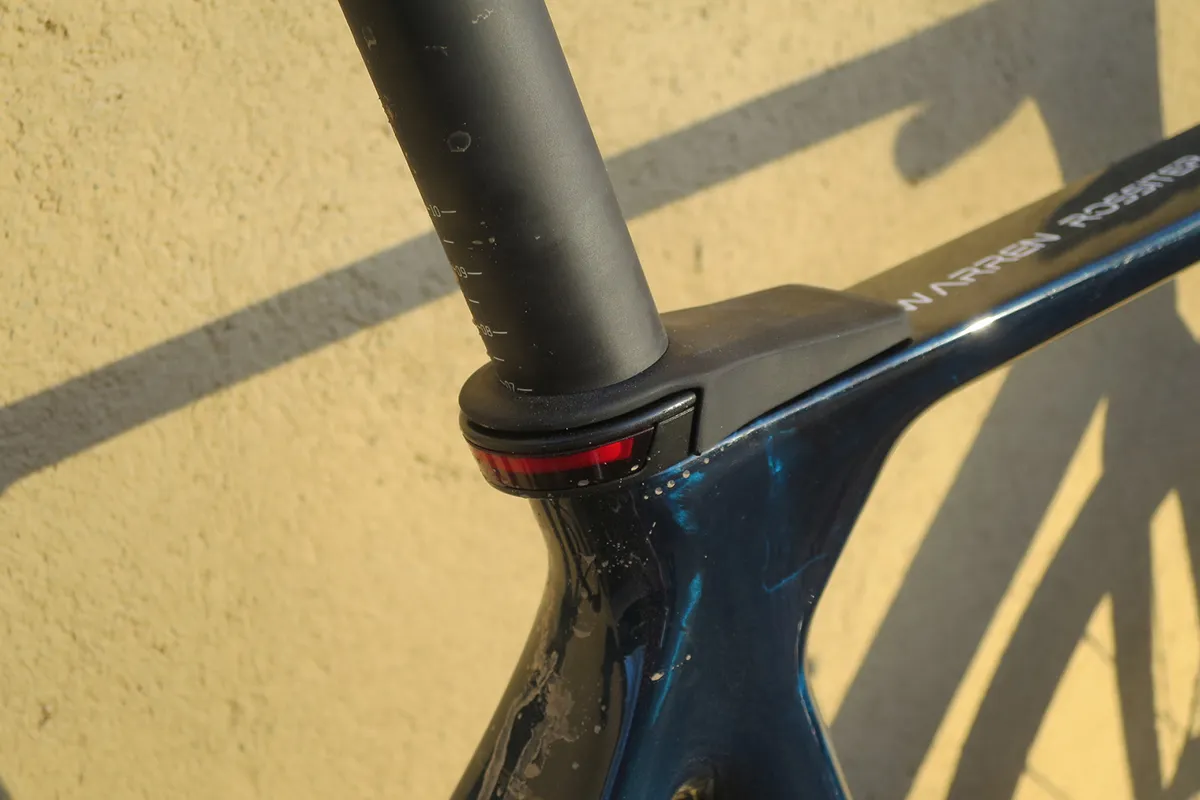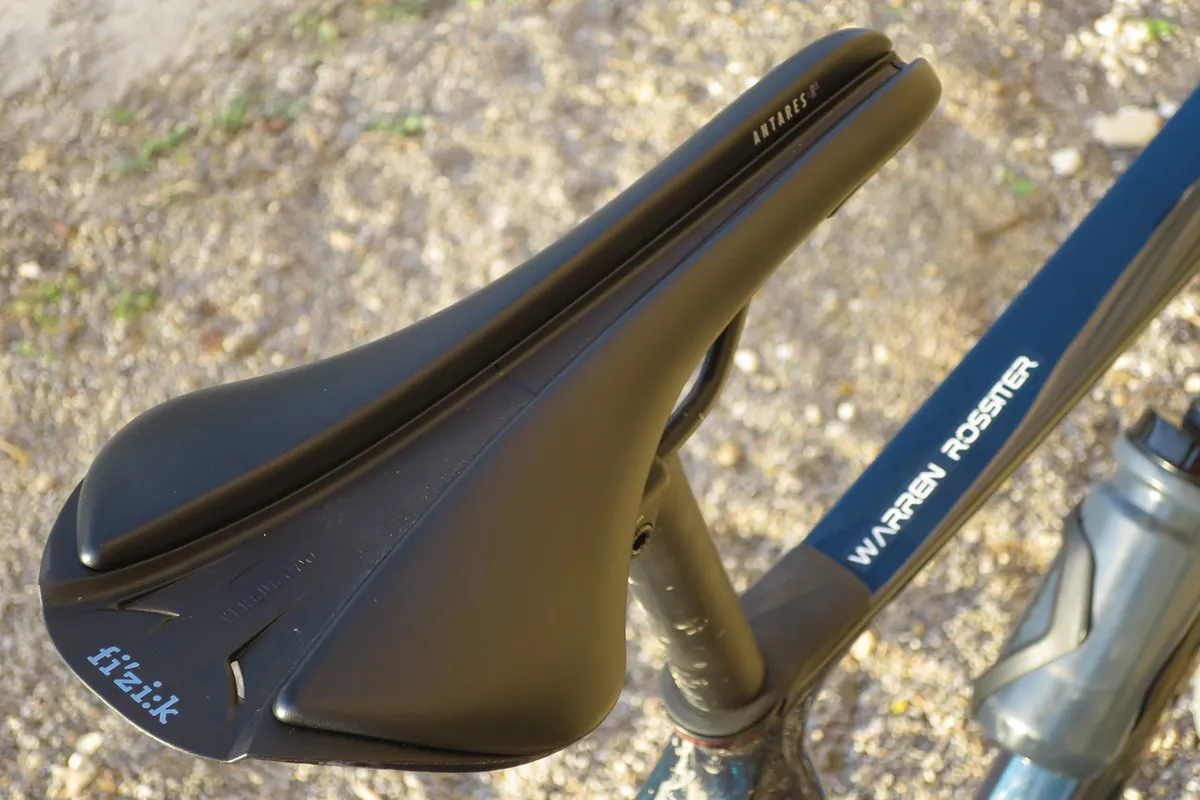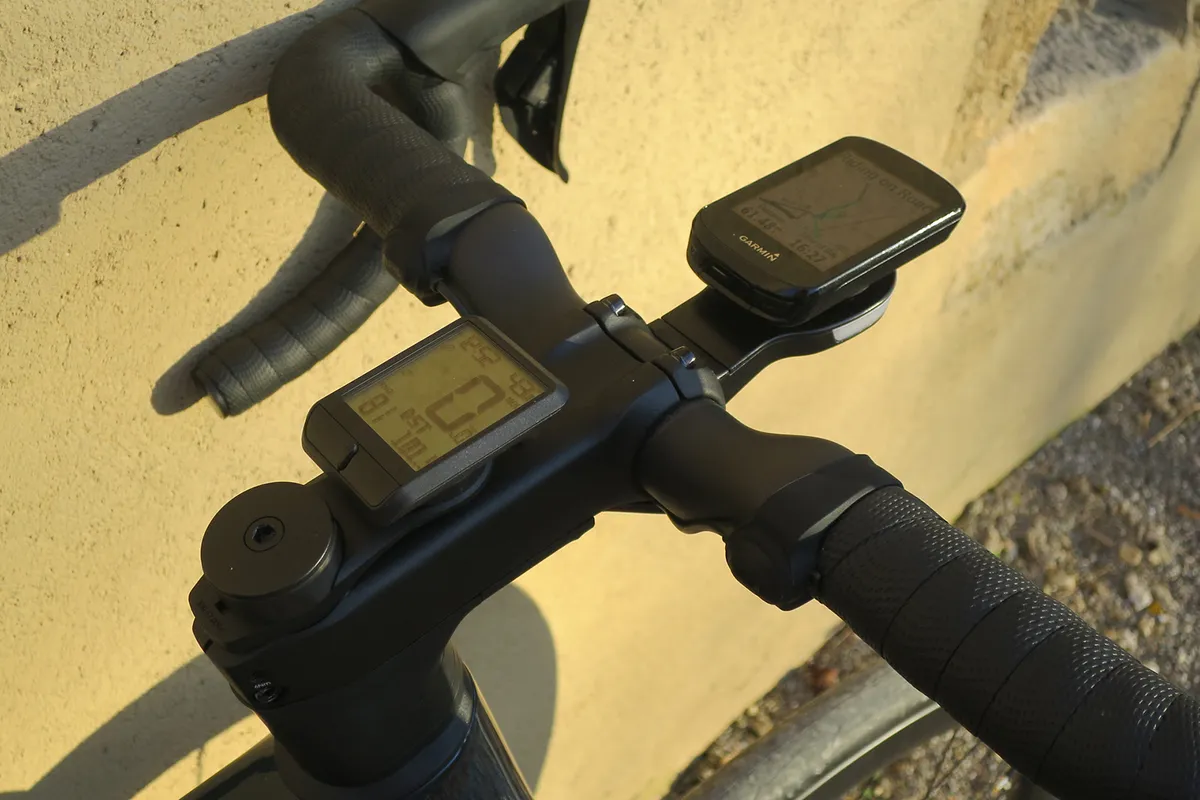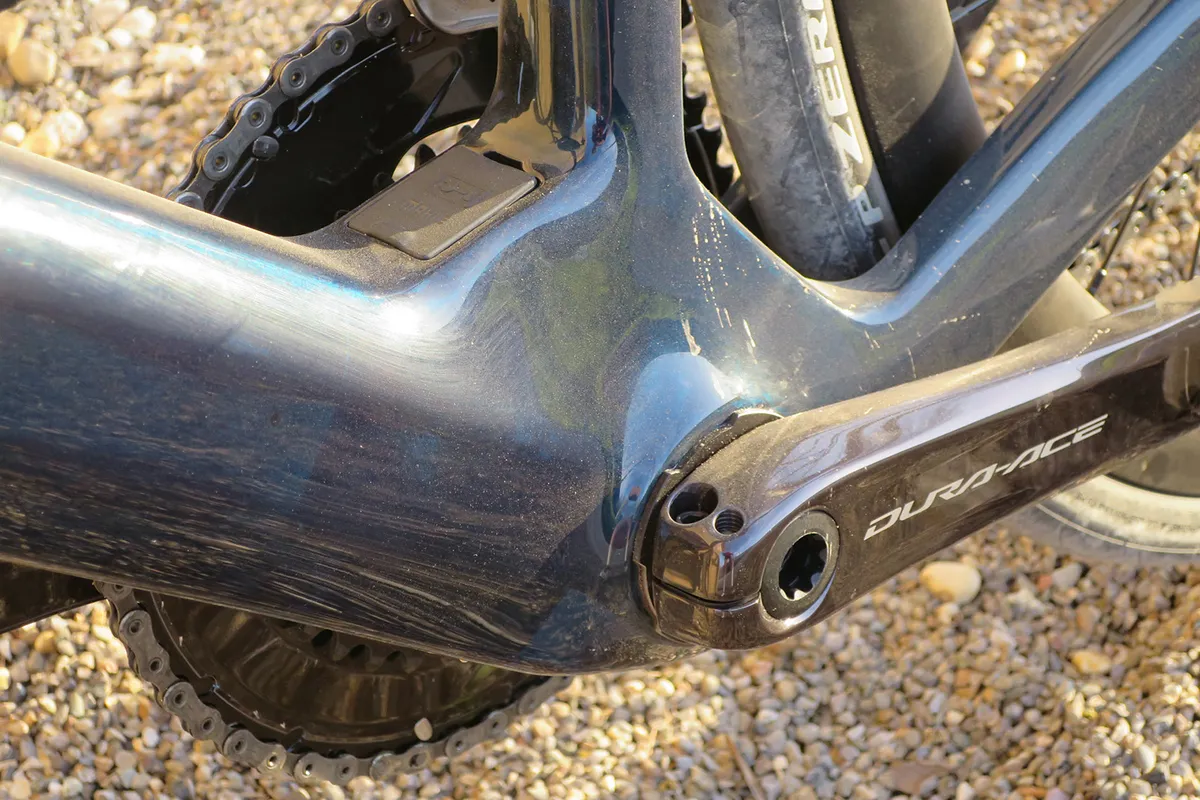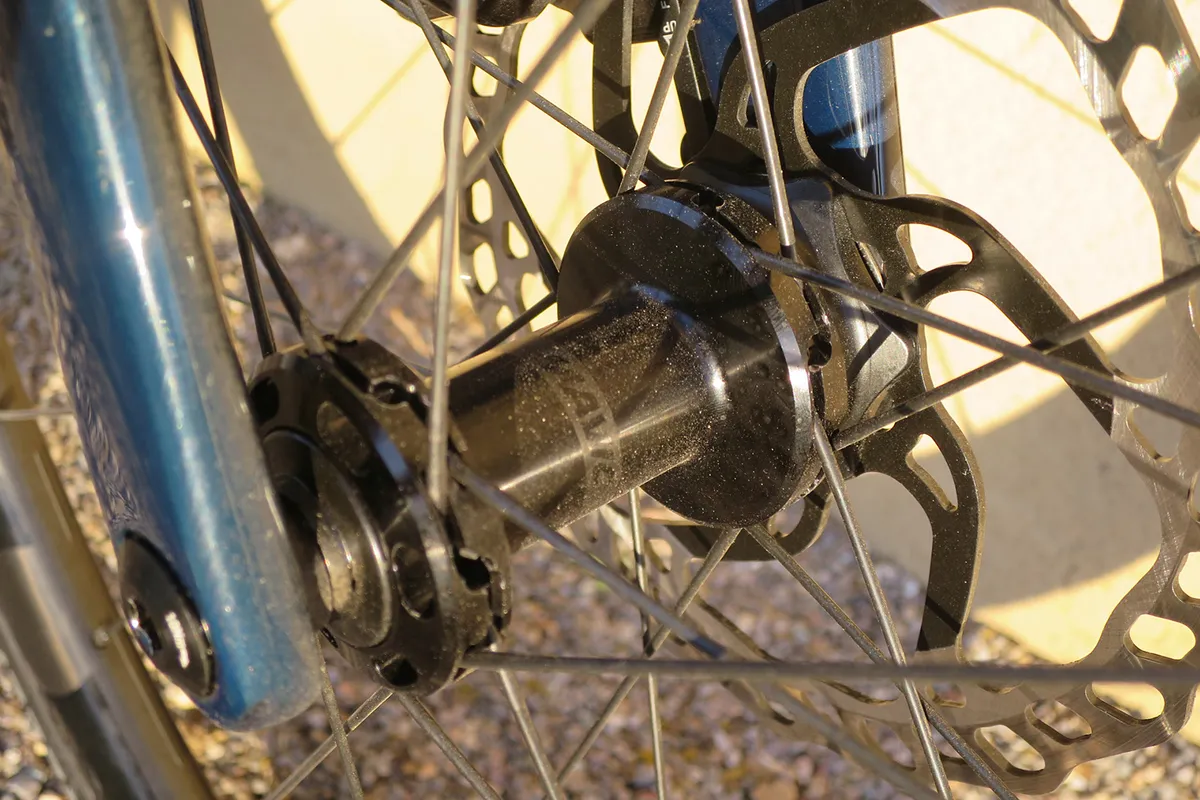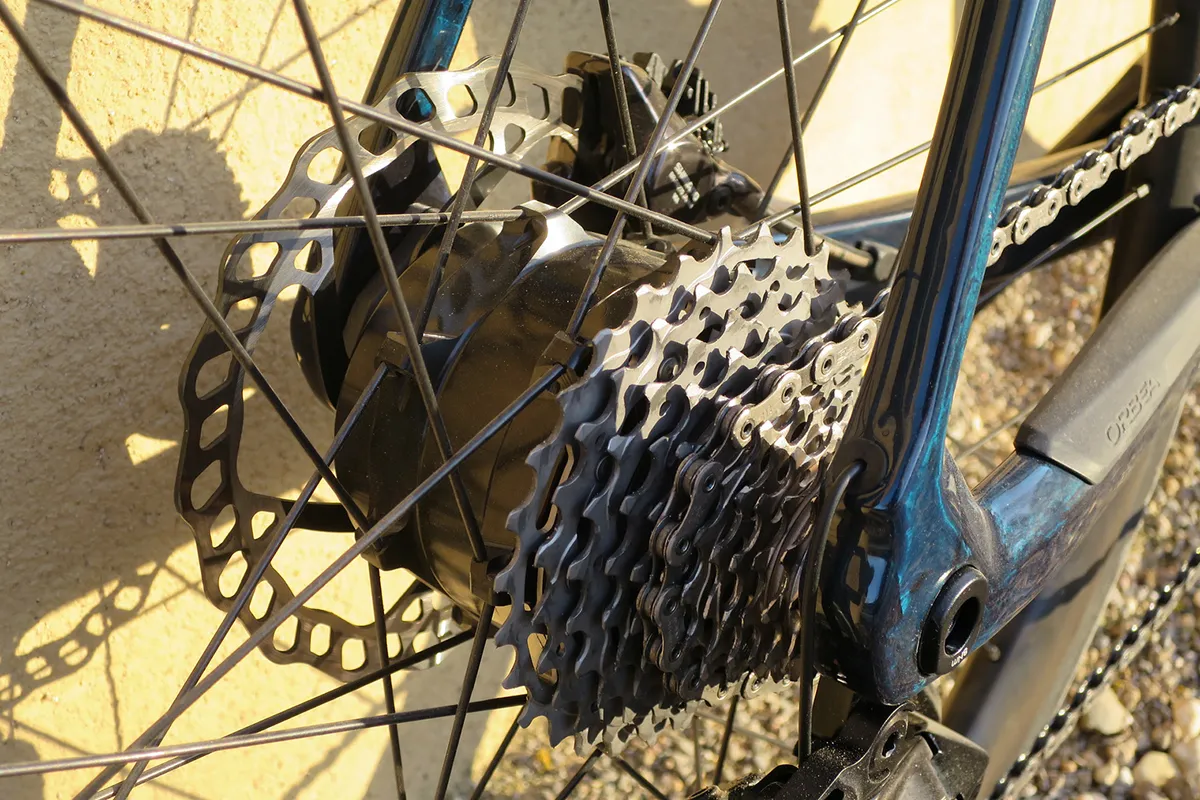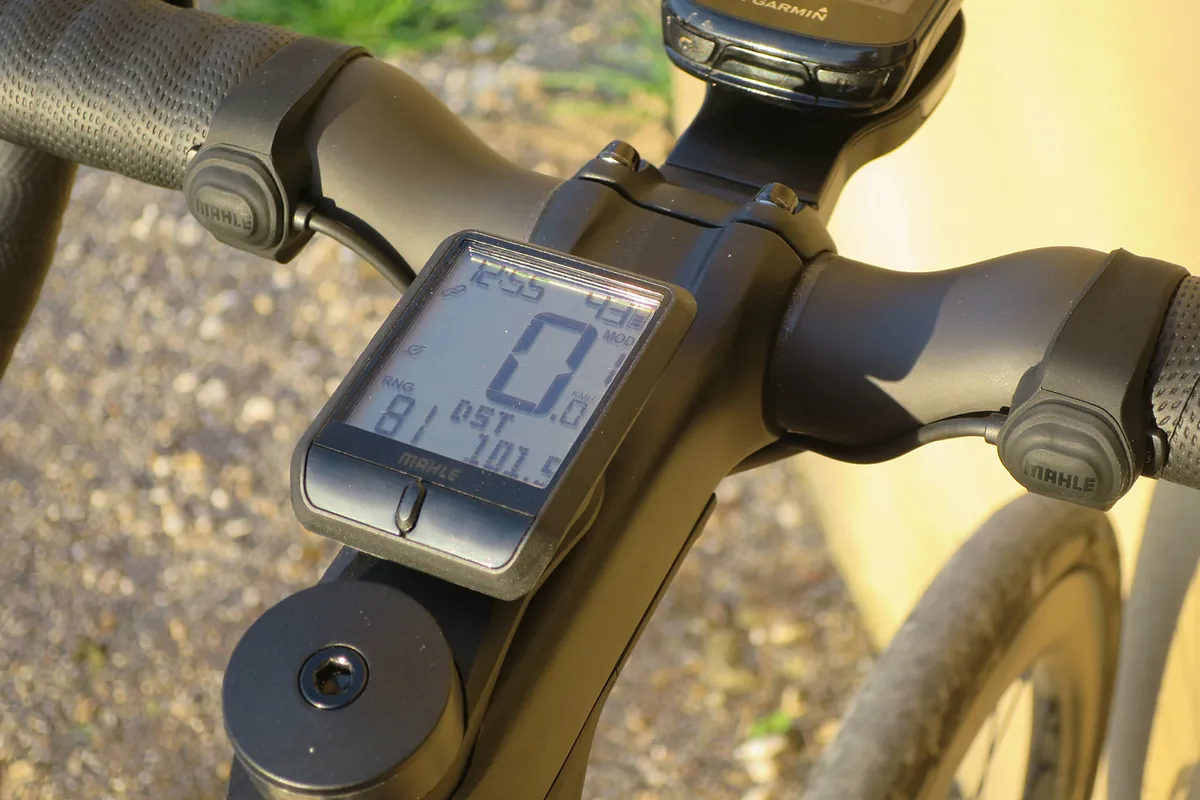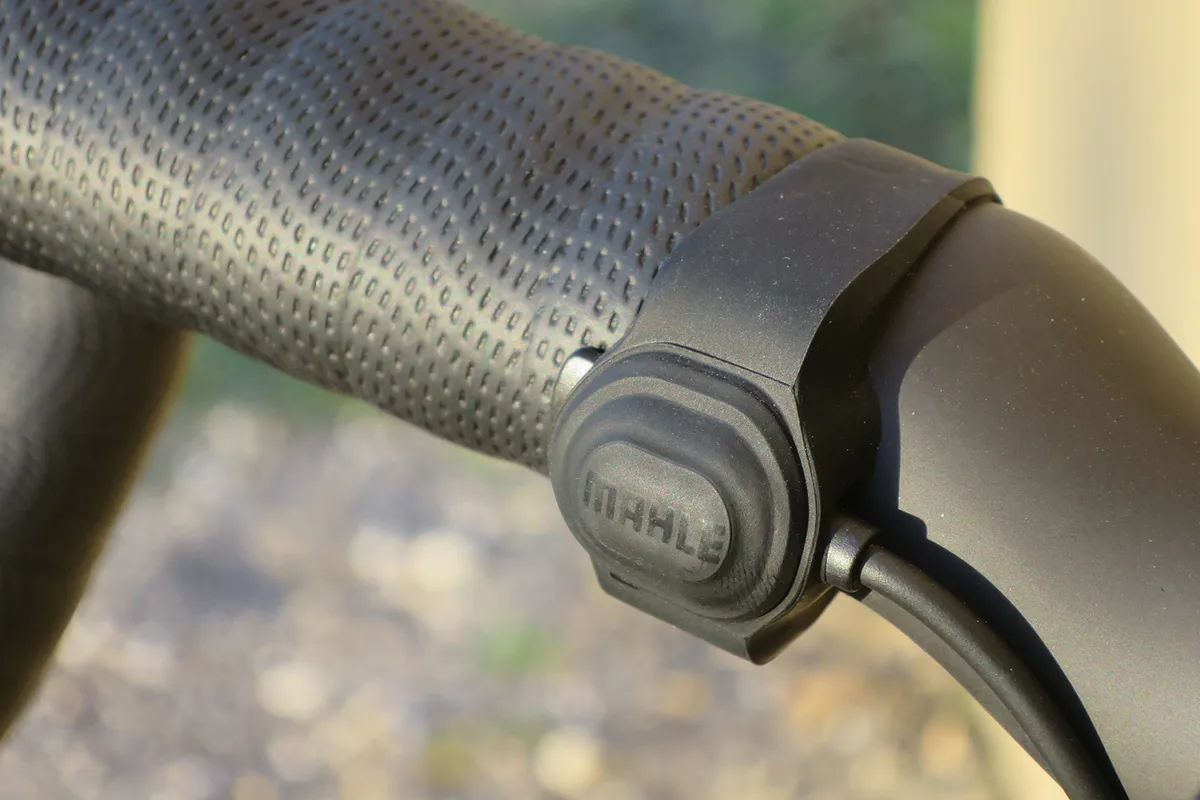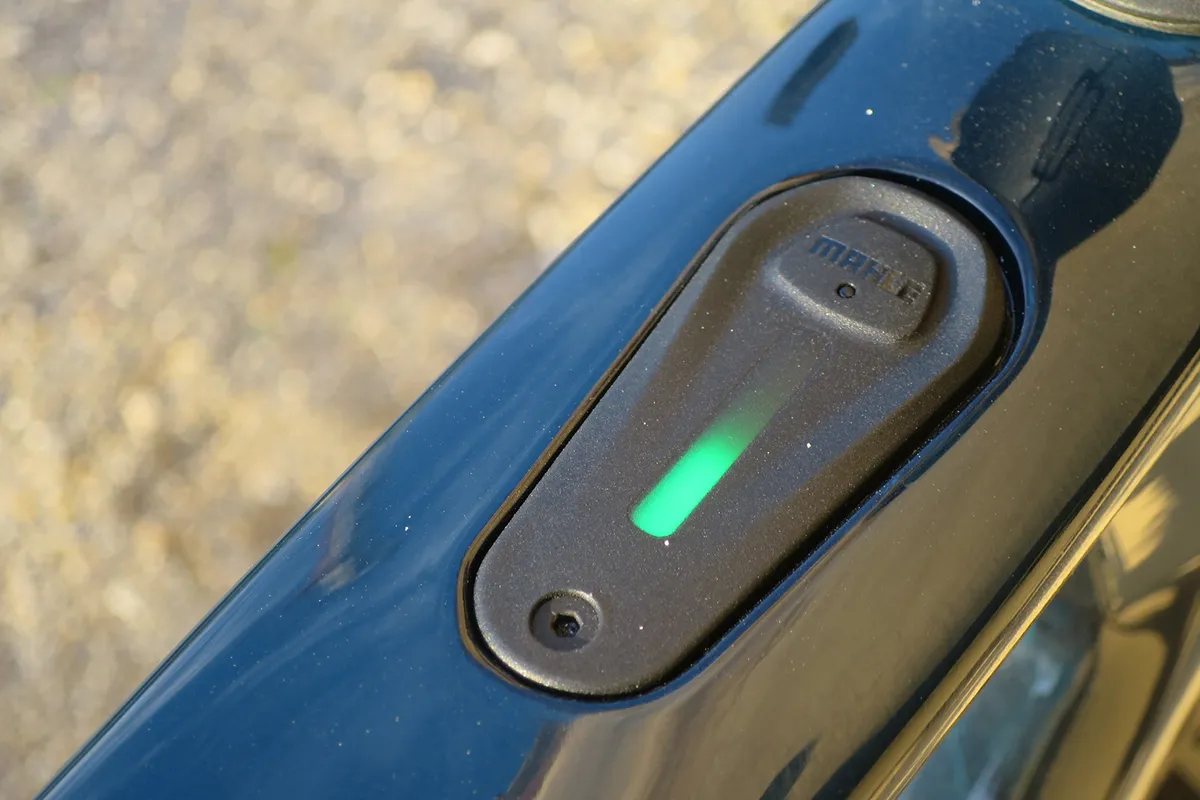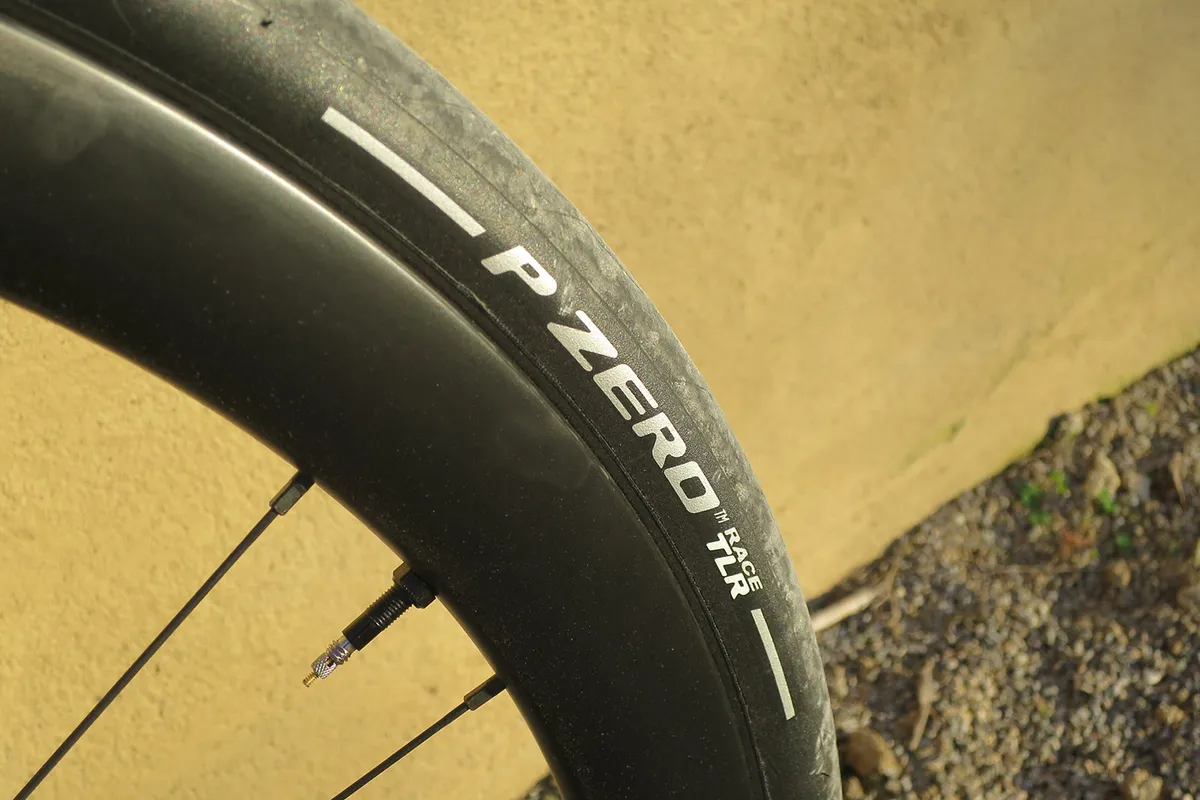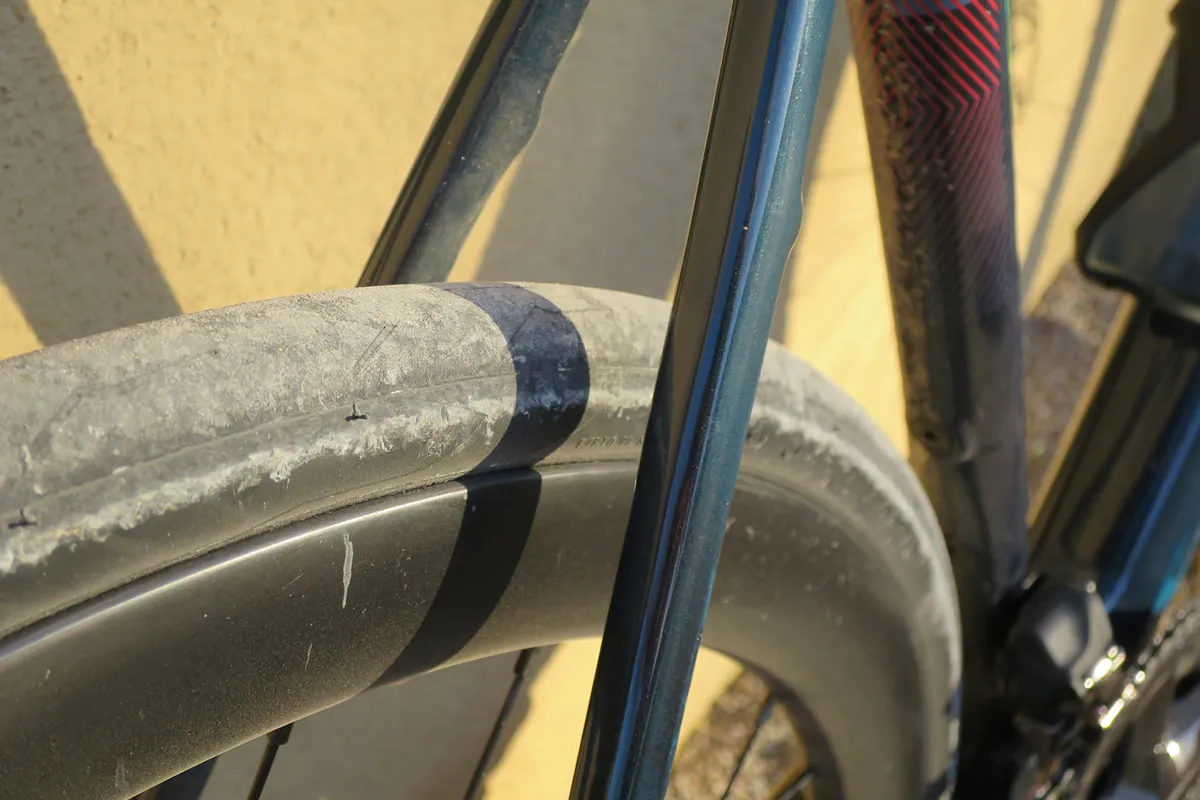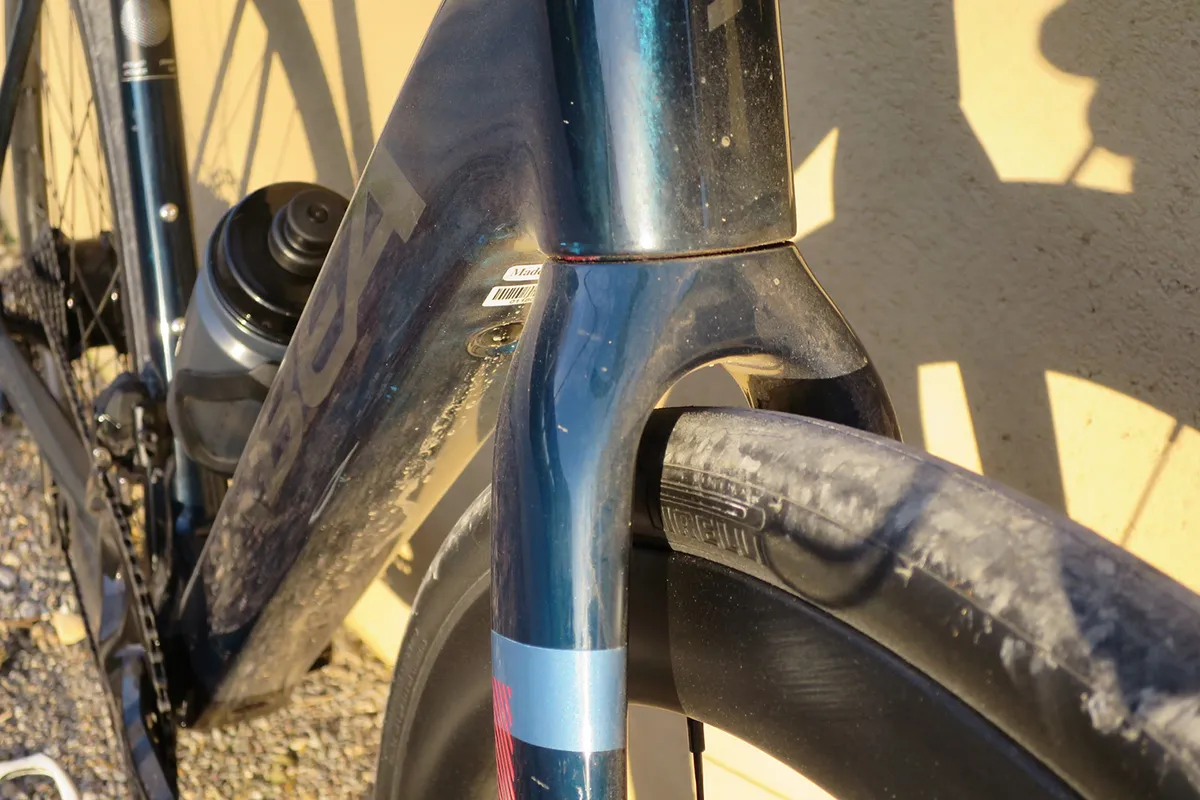Orbea claims its new new third-generation Gain offers a ‘pure road’ ride experience rather than being simply an electric bike that looks like a road bike.
That claim stems firstly from a frameset that mirrors the brand's Orca OMR frames. However, on the Gain Orbea has tweaked the geometry to make for a bike that’s more in the endurance bike space than an out-and-out race bike such as the Orca OMR.
Orbea uses its ICR internal routing system on the frame and stem to fully enclose the brake hoses, and the silhouette of the bike looks very similar to the OMR.
Only the slight oversizing and consistent diameter of the down tube belies the fact this is an electric bike.
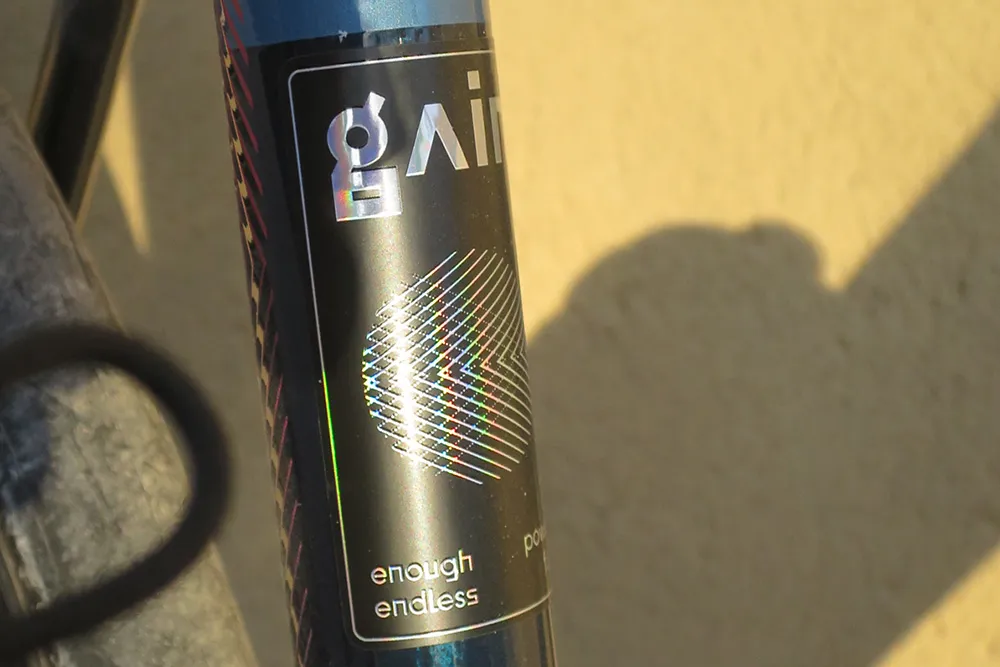
Neatly hidden mounts for mudguards/fenders add all-weather appeal and the finish is superb.
Orbea offers a decent range of off-the-peg colour options too, but the Gain is included in the semi-custom MyO ordering system. This means you can tailor not only the build and specification to your requirements, but the colour and graphics too.
Orbea Gain M10i geometry details
| | XS | S | M | L | XL | XL |
|---|---|---|---|---|---|---|
| Seat angle (degrees) | 74.5 | 74 | 73.5 | 73.5 | 73.2 | 73.2 |
| Head angle (degrees) | 71 | 71.2 | 71.5 | 72 | 72.2 | 72.5 |
| Chainstay (mm) | 415 | 415 | 415 | 415 | 415 | 415 |
| Seat tube (C-T) (mm) | 430 | 460 | 490 | 515 | 540 | 570 |
| Effective top tube (mm) | 516 | 535 | 555 | 569 | 587 | 602 |
| Head tube (mm) | 113 | 136 | 158 | 181 | 203 | 225 |
| Fork offset (mm) | 50 | 50 | 50 | 50 | 50 | 50 |
| Trail (mm) | 64.5 | 63.3 | 61.4 | 58 | 57 | 55 |
| Bottom bracket drop (mm) | 78 | 78 | 78 | 76 | 76 | 76 |
| Bottom bracket height (mm) | 263 | 263 | 263 | 265 | 265 | 265 |
| Wheelbase (mm) | 984 | 998 | 1,011 | 1,022 | 1,035 | 1,047 |
| Standover (mm) | 728 | 756 | 782 | 803 | 830 | 844 |
| Stack (mm) | 525 | 547 | 569 | 591 | 613 | 635 |
| Reach (mm) | 370 | 378 | 386 | 394 | 402 | 410 |
| Fork length (mm) | 380 | 380 | 380 | 380 | 380 | 380 |
The changes to the Gain's geometry involved adding a little more stack (rising to 613mm on the XL compared to 590mm on the OMR), reducing the reach to 402mm from 404mm and adding 32mm to the wheelbase, taking it to 1,036mm.
The ride position is further relaxed by using a bar with a 15mm rise (though through the MyO online ordering system, you can opt for a bar with no rise).
Even with these more relaxed numbers, Orbea has been careful not to slow down the Gain’s handling.
The 72.2-degree head angle combines with the 50mm fork rake and 30mm-wide tyres to create a 57mm trail figure. This gives the Gain a nicely balanced feel, with quick steering at slower speeds matched to stability when you're going fast.
Orbea Gain M10i build
The Gain M10i is the second bike I’ve tried with Mahle’s new X20 power unit. The other was the impressive BMC Roadmachine AMP One, a similar proposition at a similar price (£7,600 with SRAM Force AXS 1x).
The drivetrain is quite brilliant, as you’d expect from Dura-Ace Di2. While it makes the M10i a rather expensive proposition at £9,299, it's less expensive than Specialized’s S-Works Turbo Creo SL Evo (£12,000, SRAM Red AXS) and Trek’s Domane + SLR9 with Dura-Ace Di2 at £12,500.
There isn’t much more to say about Dura-Ace Di2 other than it has slick, consistent and fast shifting both front and rear. The braking is the best you’ll find on the road and Orbea’s choice of 50/34 chainset and close-ratio 11-30 12-speed cassette is a great complement to the bike's motor system.
The 42mm-deep carbon rims by Orbea look good at 21mm internal width. They shape the 30mm Pirelli tyres well and are true to size.
At the rear, it's obviously Mahle’s mini-motor the rim is laced to, but up-front I was surprised to find Orbea using a Mavic hub. That's no bad thing because Mavic has a good reputation for building hard-wearing hubs.
The contact points are all good; the riser road bar and Fizik saddle are comfortable, although through MyO you can switch out the bar for a no-rise RP10 compact-drop carbon bar (in your preferred width).
If you don’t like the saddle, you can opt for a Selle Italia SLR Boost or Prologo Scratch M5 instead.
Orbea Gain M10i ride impressions

The key to the very best electric road bikes is they retain as much of the real riding experience as possible, rather than your efforts being overwhelmed by the motor, or the motor becoming a drag – or dead weight when it’s not assisting.
Until now, the most impressive exponents of this have been the aforementioned BMC Roadmachine AMP One, the Scott Addict eRIDE Premium and the Specialized S-Works Turbo Creo SL.
Based on the evidence of my first outing, the Gain outclasses all of those rivals. It's all down to how Orbea has tuned the system, along with the optional extras it has included as standard.
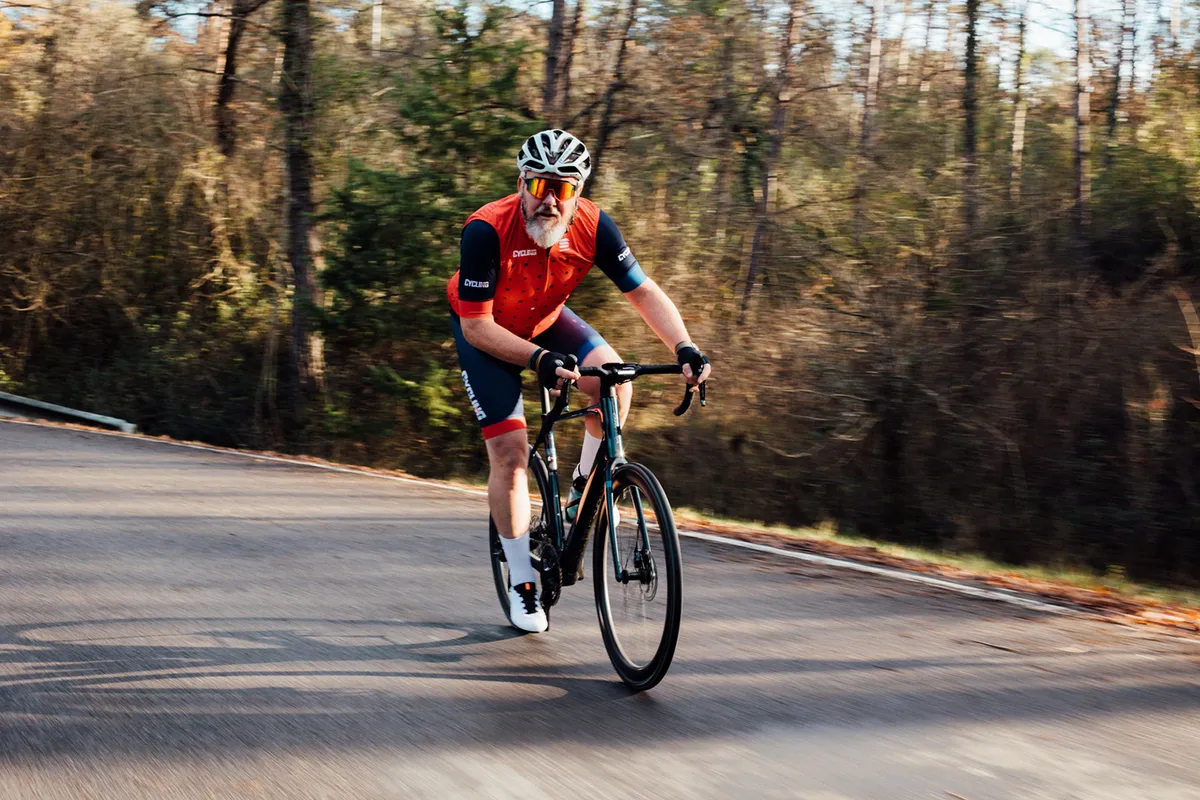
The way in which the motor mirrors your input in a linear path as your power increases gives the Gain an incredibly natural ride feel.
Even in the highest mode, where it gets to full assistance sooner, the Gain never feels as though it's leading you up a climb and the bike never surges ahead of your pace.
The clever motor mapping is also tuned so that when you exceed the motor's EU governed limit (15.5mph/25kph) the power tapers out rather than cutting out. It all adds up to a bike that feels natural, as if it's your own power, but with a bit more pace.
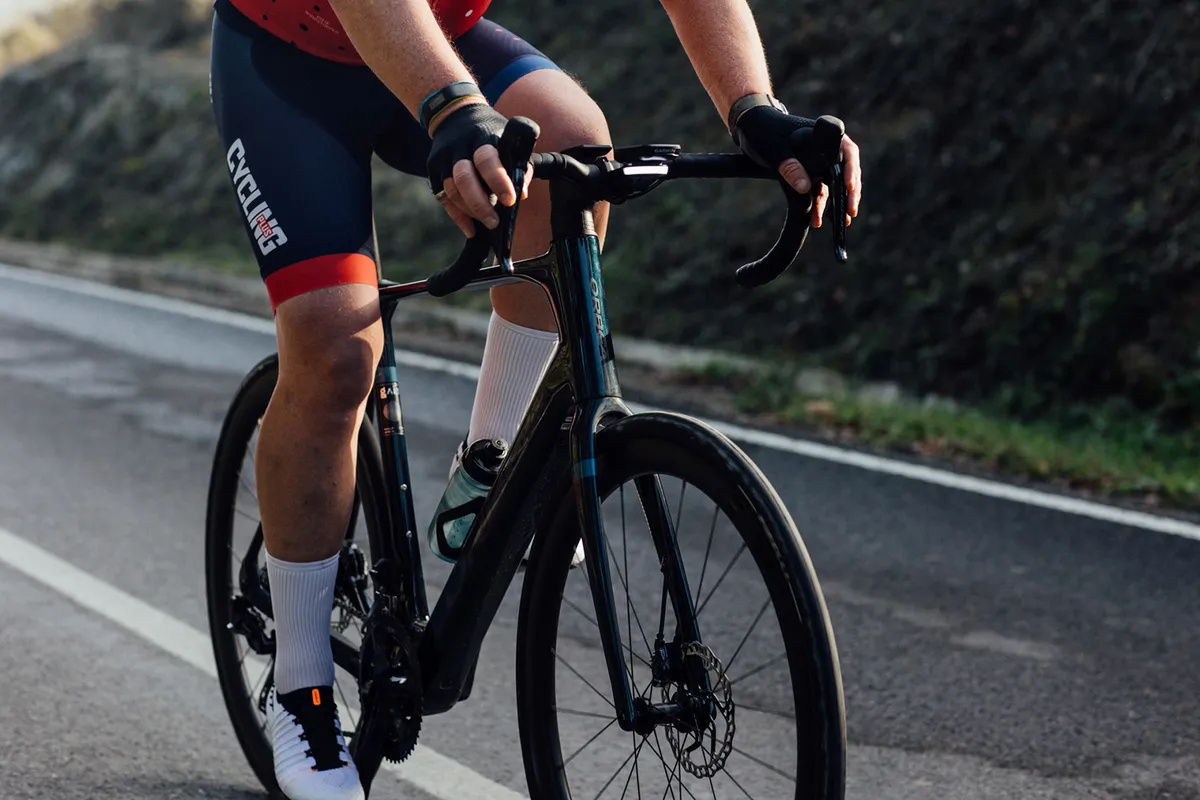
It means that, especially on climbs, you get over a steeper gradient ‘hump’ sooner, and the bike rewards you if you put in the effort. It helps you get in a steady cadence rhythm sooner too.
I want to investigate the range capability much more once the test bike lands back in the UK for more riding. My early impression, however, is that because the motor tunes in to your effort, you use less of the energy reserves on climbs and that leads to some impressive potential range numbers.
The other big plus is Orbea’s inclusion as standard of the optional remote motor controls. These fit to the bars in the style of SRAM Blip, which enables you to shift both up and down the motor settings from the bar without having to take a hand off and scroll up through the modes on the top tube controller.
I ended up using the three modes much like another set of gears. This meant moving between modes freely on climbs, shifting up to the highest level to accelerate up a steeper ramp or switching down to the lowest mode (or even switching it off entirely), when spinning a good cadence on false flats or slight inclines.
It’s something you simply can’t do on rivals such as the BMC, and it’s something I’d be looking to add to a Mahle-equipped e-road bike.
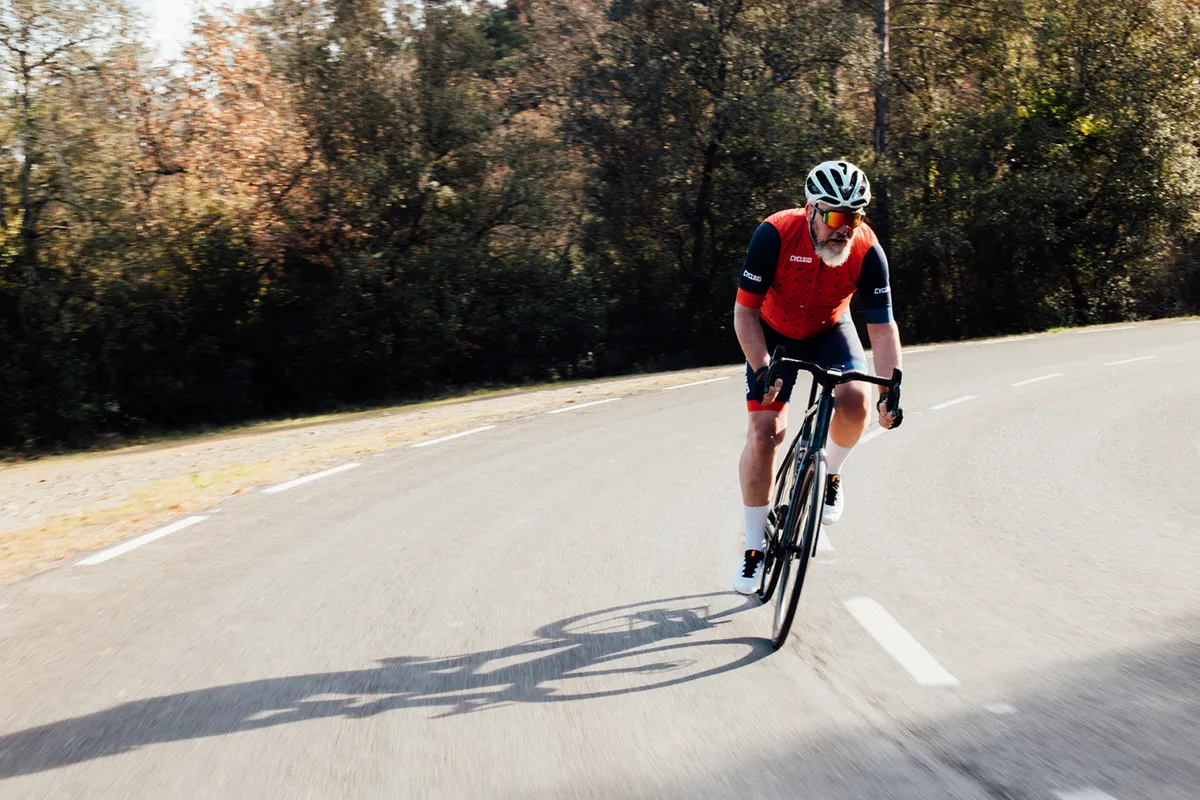
Yes, you can control the motor using a Garmin GPS synced to the bike, but that still involves taking a hand off and operating the touchscreen.
On my first road ride with the Gain, by the time I’d finished our set course I’d racked up 62.25 miles/100.18km, with 3,795.8ft/1,157 metres of ascent. This would be impressive for any e-road bike; it’s even more impressive that I got over the line with 45 per cent battery capacity left.
These figures could give the Gain a 100-mile range without even having to resort to adding the optional range-extending battery.
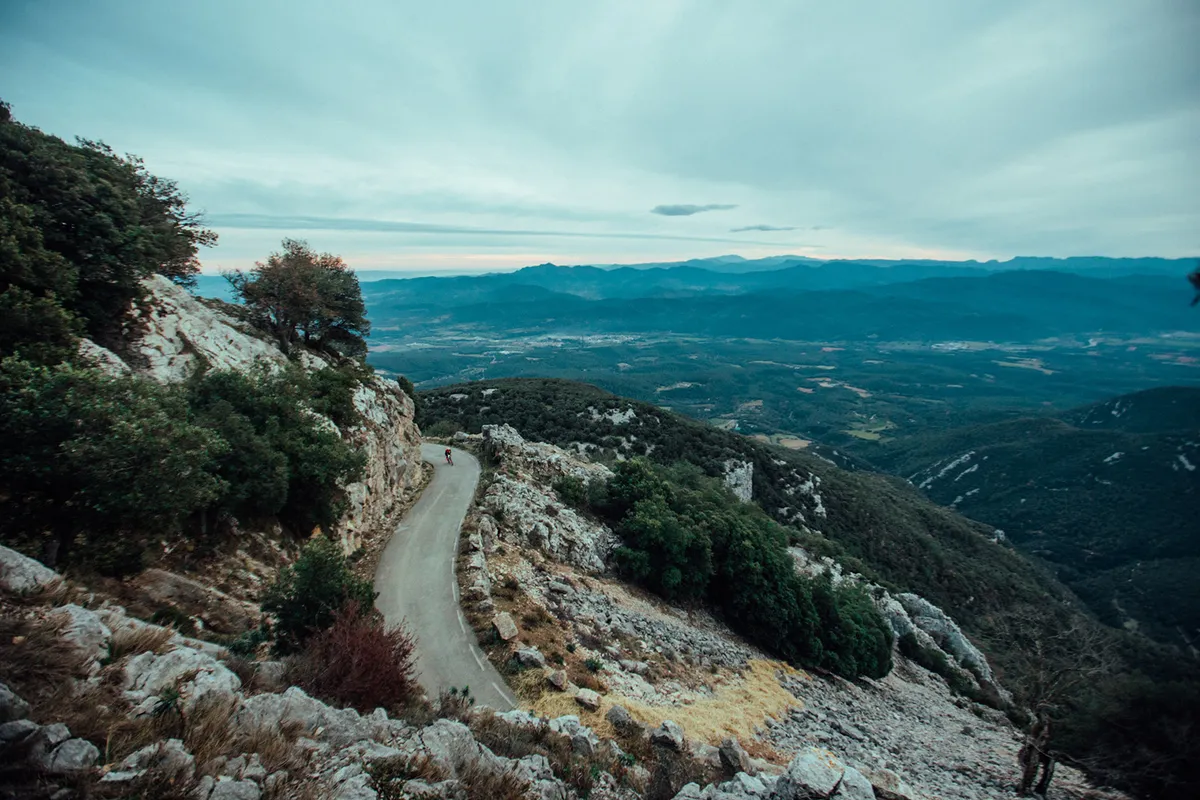
The drivetrain performance and braking are excellent and the motor provides unobtrusive assistance and plenty of control, but that would all be moot if the heart of the Gain didn’t live up to the high performance of its parts.
Thankfully, the Gain feels superbly balanced, and the low-down weight of the motor system doesn’t upset the bike's handling.
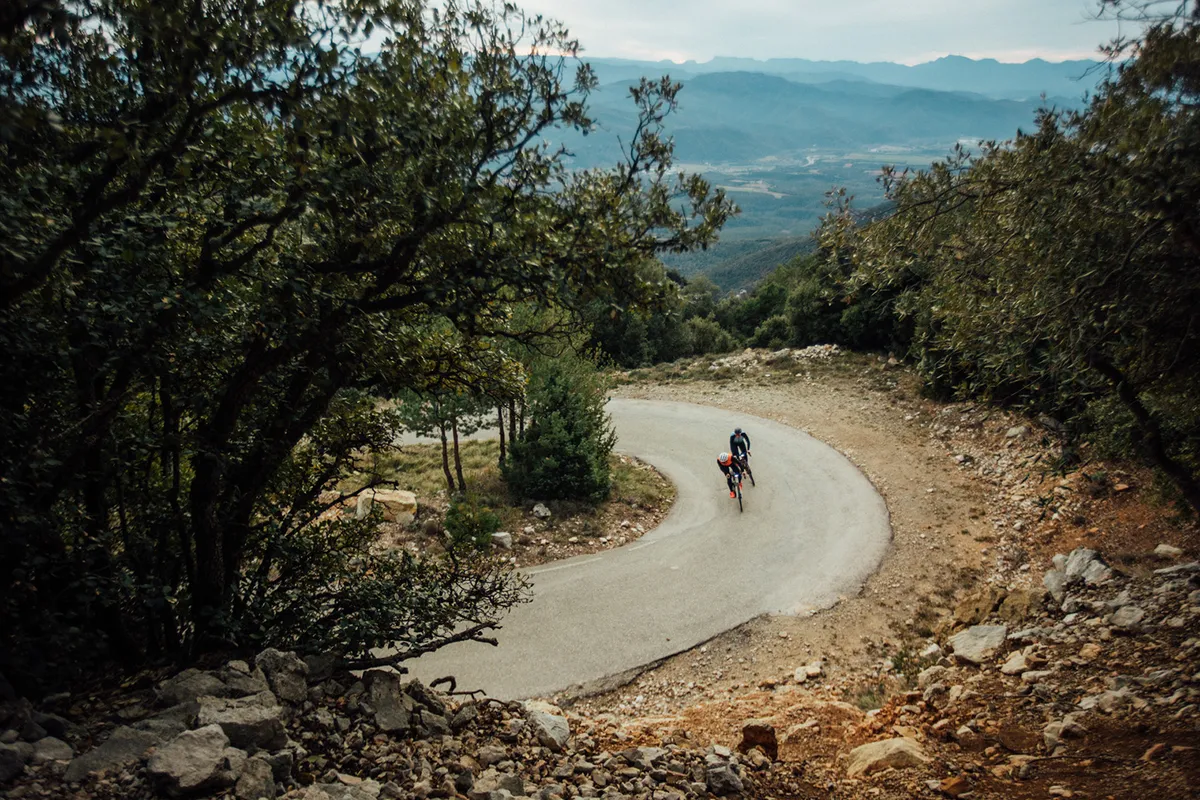
I felt confident dropping a shoulder and committing to fast, twisty road descents on the hills and climbs surrounding our Girona base camp.
The Pirelli tyres were set up tubeless as intended, and in a mix of dewy and dry conditions they never felt anything less than full of grip. They were also compliant enough for a couple of light gravel riding excursions on my test rides.
The front end is taught when climbing and responsive to steering inputs, but it doesn’t feel hard.
It copes with rougher surfaces well and the riser carbon bar does a great job of reducing road buzz.
At the rear, it’s a little firmer and I found a few more psi than usual in the rear tyre was necessary, simply because the rear-hub motor adds weight at the rear.
Orbea Gain M10i bottom line

The Orbea Gain impresses, and kudos to the team at Orbea for not simply fitting the off-the-peg X20 system (as impressive as it is). Instead, Orbea has tuned it to what it believes an e-road bike should feel like. I’m looking forward to spending more time on the M10i.
Would I opt for this range-topping Dura-Ace equipped version though? Probably not – the M20i with Ultegra Di2 and the same build looks to offer the same bang for much less buck at €7,499 / $8,650 / £6,999.
I’d also argue you’d get the same slick experience from the 105 Di2-equipped Orbea Gain M30i at an even lower €6,299 / $7,300 / £5,999.
Product
| Brand | Orbea |
| Price | €9999.00, £9299.00, $11500.00 |
| Weight | 11.50kg |
Features
| Fork | Gain OMR carbon fork |
| Stem | OC Road Performance RP10, -8 degree |
| Chain | Shimano CN-9100 |
| Frame | Orbea Gain Carbon OMR, Integrated Seat clamp with integrated STVZO rear light |
| Motor | Mahle motor hub X20 |
| Tyres | Pirelli P ZERO™ Race TLR 700x30c |
| Brakes | Shimano R9270 Hydraulic Disc |
| Cranks | Shimano Dura-Ace R9200 34x50t |
| Saddle | Fizik Antares R5 Versus EVO Regular |
| Wheels | Carbon 42, Tubeless, 21c |
| Headset | FSA 1-1/2” Integrated Aluminium Cup |
| Shifter | Shimano R9270 |
| Cassette | Shimano Dura-Ace R9200 11-30t 12-Speed |
| Seatpost | OC Performance XP10-S |
| Grips/tape | Orbea Anti-Slippery/Shock Proof |
| Handlebar | OC Road Performance RP10-R Carbon, Rise 15, Reach 70, Drop 125 |
| Available sizes | XS, S, M, L, XL, XXL |
| Rear derailleur | Shimano Dura-Ace Di2 R9250 |
| Front derailleur | Shimano Dura-Ace Di2 R9250 |
| Features | Battery: Mahle iX350 36V 353Wh Optional: Mahle Range Extender e185Wh (Extra External) Display: Mahle Pulsar One monochrome ANT+ LEV Remote1 Mahle ONE Head Unit (BT/ANT+) Charger: Mahle Active Charger up to 4A Extras: Front light Front position light, on display holder, COB Led, On/Off, 60 Lumen, ECE50 |
